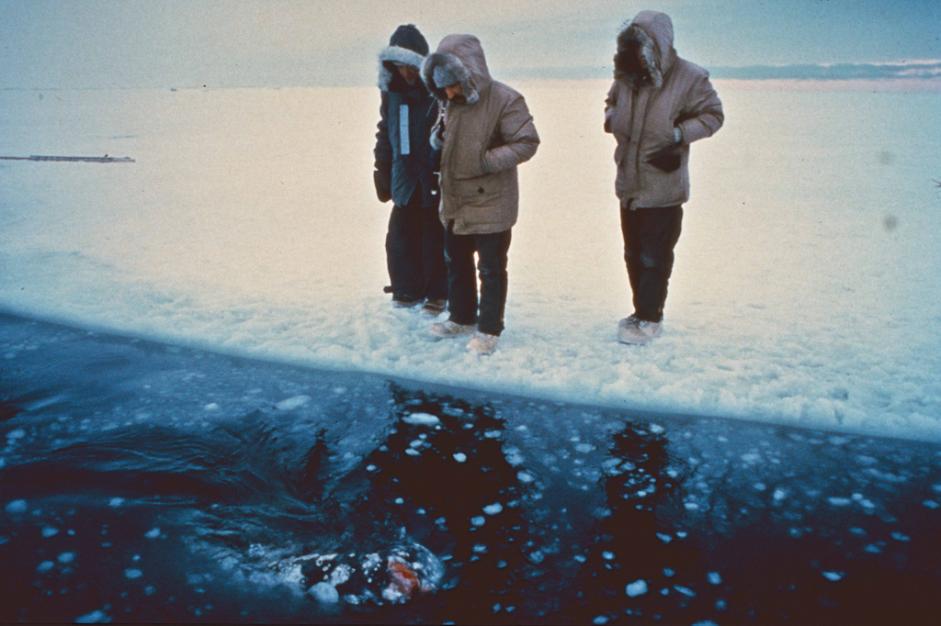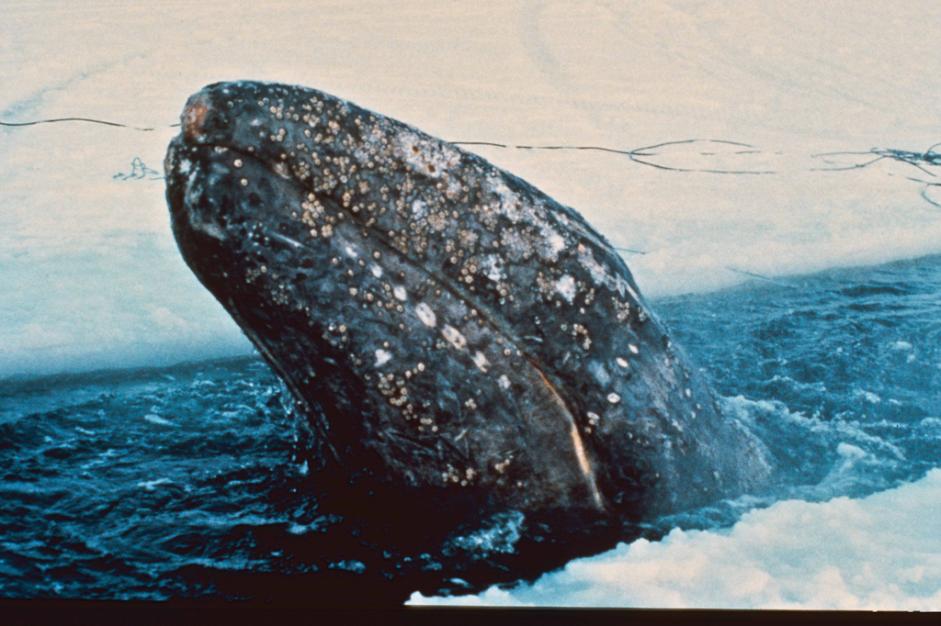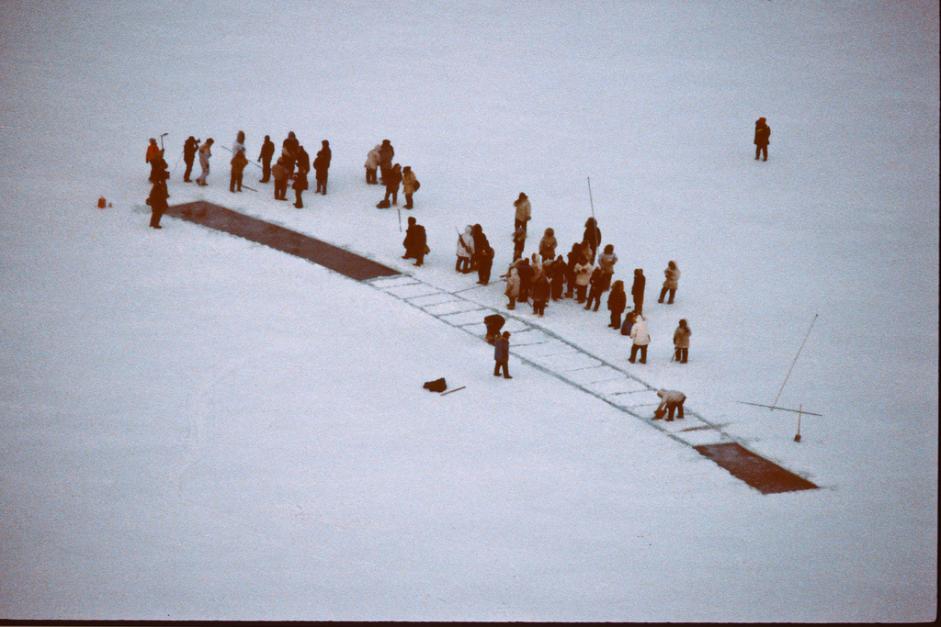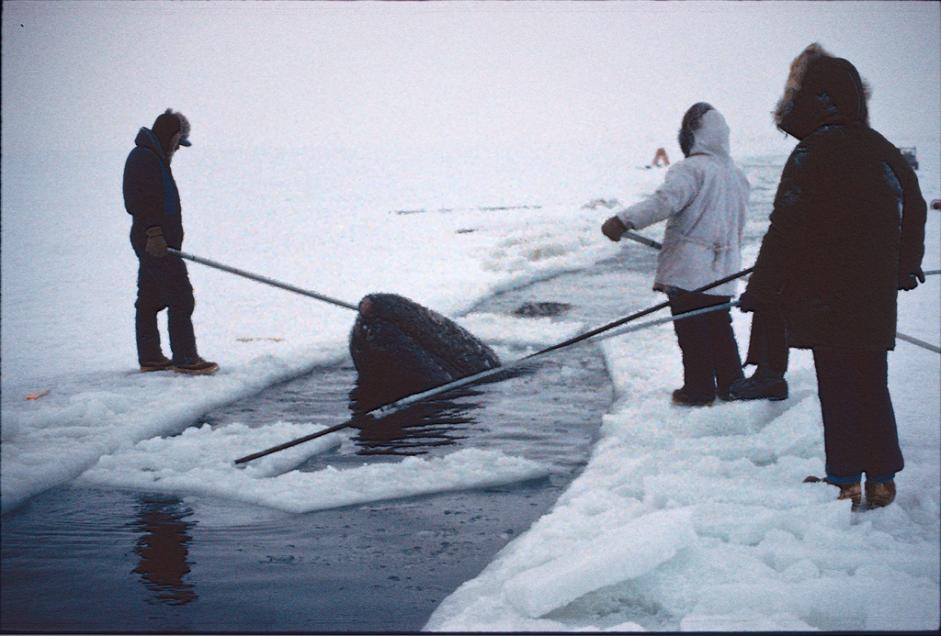
Big Miracle: The Real Rescue in Images
On the Silver Screen

One Feb. 3, the movie "Big Miracle," based on the true story of the rescue of stranded gray whales off the coast of Alaska, opened in theatres.
The movie, starring Drew Barrymore as a Greenpeace volunteer (whose character was based on a real Greenpeace representative), dramatizes the events of October 1988, when the world had all eyes on Barrow, Alaska and the effort to save three gray whales trapped by sea ice.
With the release of the movie, the National Ocean and Atmospheric Administration (NOAA) has revisited its part in the amazing rescue. What follows are images taken during the real rescue by those on the scene, scanned from slides at the National Marine Mammal Lab in Seattle.
Stranded whale

One of the three gray whales trapped by sea ice outside of Barrow, Alaska in 1988.
The whales became stranded after they stayed too long in their feeding grounds, long after the other whales had left to migrate south for the winter. The holes in the ice were needed for the whales to breathe.
Small holes

Early in the rescue, the three gray whales were breathing through small holes to get air. Inupiat hunters came to help cut bigger holes in the ice through the whales, using their significant knowledge of the area and the ice.
Inupiat hunters help out

Inupiat hunters living in and around Barrow, cut a path through the sea ice with chain saws.
"The Inupiat people who lived in and around Barrow did most of the hole-cutting, and their knowledge and guidance helped the operation stay safe and on track," said Dave Withrow, a NOAA Fisheries marine mammal biologist who participated throughout the two-week rescue, in a NOAA interview.
Checking on the whales

In this picture, Withrow (center) is checking on the whales. He said that during the rescue, "we didn't know why this had captured the whole world's attention, but all eyes were on us."
Clearing sea ice

Experts move sea ice out of the way for the two surviving gray whales during 1988's Operation Breakthrough, as the mission was called. One of the three original whales did not survive the rescue attempt.
Keeping holes clear

One of the gray whales can be seen here popping up through a breathing hole in the ice.
Withrow said companies were eager to help in the rescue effort, sending chainsaws to cut holes in the ice and generators to provide light and power.
Get the world’s most fascinating discoveries delivered straight to your inbox.
Series of holes

The rescuers cut a series of holes in the ice in the hopes that the whales could be coaxed from one hole to the next, and slowly out to sea.
Frozen over

Temperatures were so cold though, that the ice kept freezing over. A company in Minnesota, having watched news reports, sent pumps to keep the water circulating and from freezing. In a bit of serendipity, the noises of the pumps attracted the whales, making it easier to move them from hole to hole, Withrow said.
In the image above, places where the whales have surfaced and broken through the ice before the arrival of the pumps can be seen.
Soviet icebreaker

Though the event occurred at the height of the cold war, Soviet Union authorities were eager to help in the rescue. They sent an icebreaker ship to break a 15-foot area at the head of the bay and clear a channel for a few miles.
It was important to keep the icebreaker from getting too close to the whales, Withrow said, so the breathing holes cut in the ice were a little apart from the channel, slowly leading up to it.
Channel cleared

The Soviet icebreaker was able to clear a channel through the ice so that the two surviving whales could reach open water.
"Once freed, the whales still had a difficult path, swimming through jumbled ice left behind by the ice breakers, but we led them to the best possible spot for returning to the migratory path, and even the weather was in their favor," Withrow said.
What happened to the whales after that isn't known. The team had originally planned to put satellite trackers on the whales, but with the loss of one of the whales, the team didn't want to stress the remaining two any further.

Andrea Thompson is an associate editor at Scientific American, where she covers sustainability, energy and the environment. Prior to that, she was a senior writer covering climate science at Climate Central and a reporter and editor at Live Science, where she primarily covered Earth science and the environment. She holds a graduate degree in science health and environmental reporting from New York University, as well as a bachelor of science and and masters of science in atmospheric chemistry from the Georgia Institute of Technology.
 Live Science Plus
Live Science Plus





